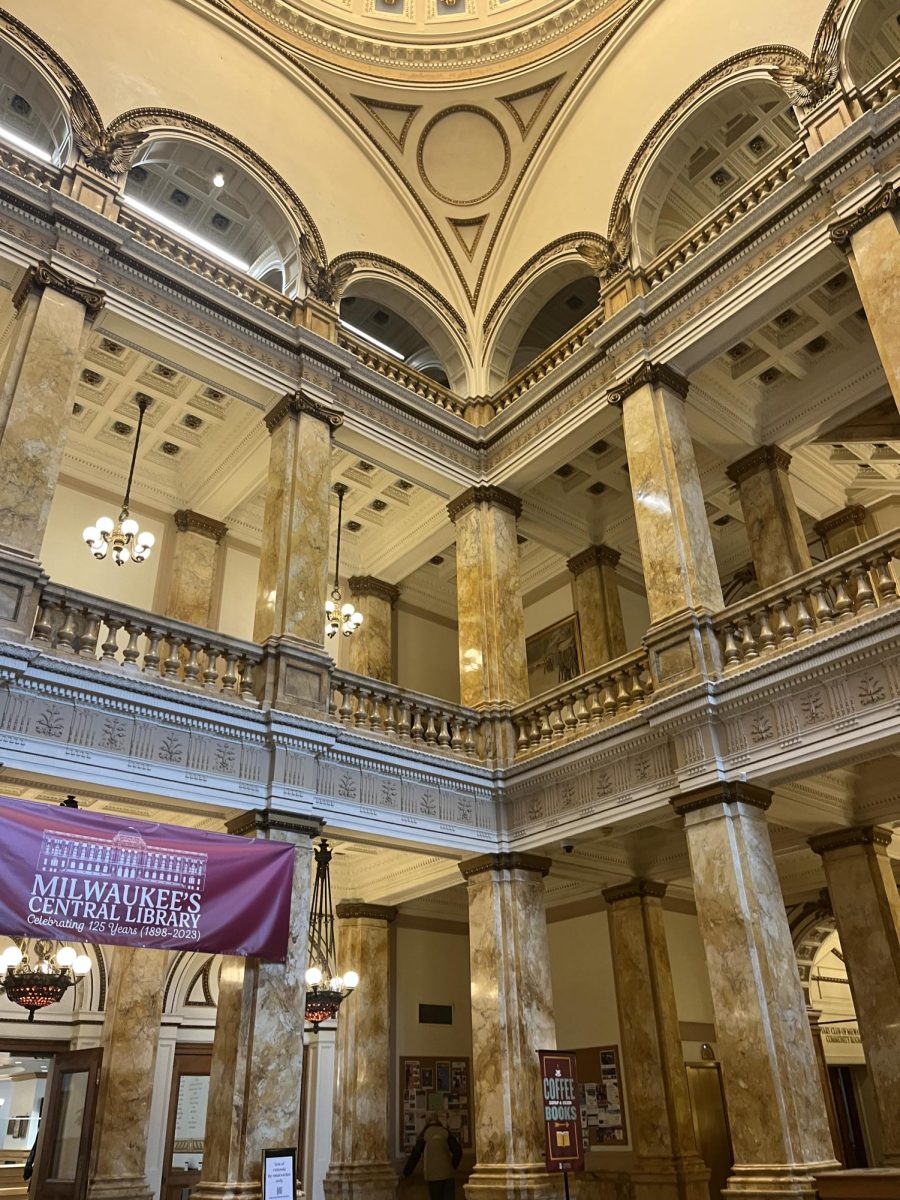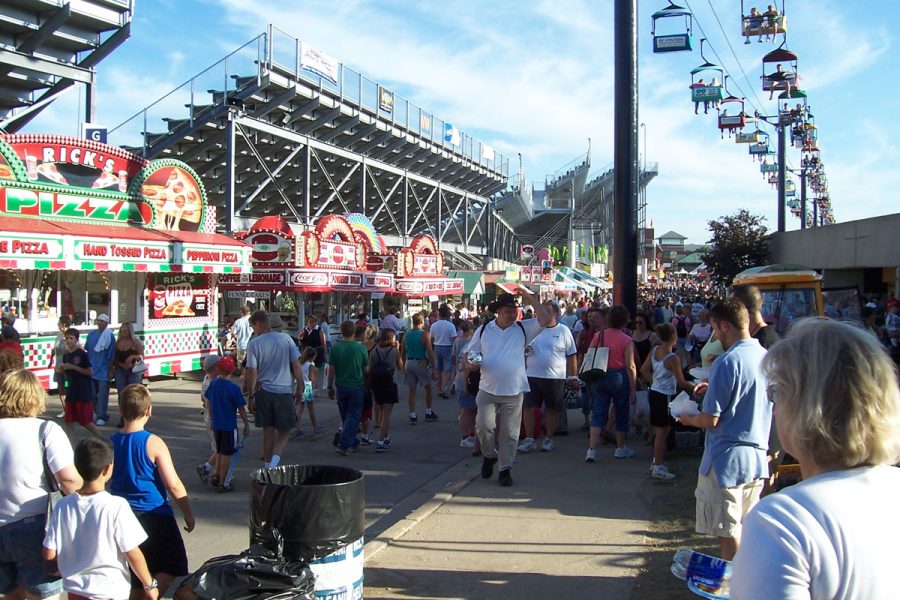
The Italian immigrants who arrived at America’s sandy gates in the late 19th and early 20th centuries came in search of many different things.
Some sought the economic opportunities presented by a vast and growing economy that sprung notions of wealth and grandeur. Some yearned to break free from a distant northern-centered government that suffered the growing pains of a young and unequipped newly unified country. Some just wanted a new life, a new slate to write their life’s story on.
Although Milwaukee is known for its German heritage, Italian immigrants also had a part in shaping the city. To this day, their sons and daughters keep that legacy alive.
Immigrant Origins
Mario Carini, an Italian-American historian and author of the book “Milwaukee’s Italians: The Early Years,” said nearly every region of Italy was represented in Milwaukee.
“They came from all over Italy,” Carini said. “Some came from the northern regions of Liguria or Lombardy and some from the more central regions like Lazio.”
However, the greatest number of Italians who emigrated to the U.S. hailed from the depressed and impoverished regions of il Mezzogiorno. Literally meaning “the mid-day,” il Mezzogiorno referred to the southern regions of the country, the ones left behind culturally, economically and socially after the unification of Italy in 1870.
Several immigrants from il Mezzogiorno came from the regions of Puglia, Campania, Abbruzzo and Calabria. Once part of the Kingdom of Two Sicilies, the transition to Italian unification was a difficult journey. The southern economy was mostly agrarian-based, in contrast to the industrial north, and the peasants of the countryside had to work non-stop to provide the simplest means of survival.
The island and people of Sicily suffered most. Sicily thought of itself as an entirely different country, a place where the green, white and red were hardly recognized, if not despised. It was there that peasants faced the toughest of circumstances. A few very wealthy men, named i latifondisti, owned nearly all of the workable land of the sun-baked island. The impoverished laborers hired to work the land toiled long and hard and received scant returns.
Life in il Mezzogiorno soon became unbearable, and the lure of la vita Americana became more and more desirable. By 1910, four out of every five immigrants came from the South, Carini said.
The quest for the American dream started soon after the immigrants passed through the doors of Ellis Island and stepped upon the real America. Carini said, as the old axiom “go West, young man” holds, so did the immigrants listen. A good number did stay and seek their fortune in the bustling metro of New York City, but others, intrigued by tales of a gold rush and general curiosity, embarked on their trek westward.
But as they made their way, economic necessity forced Italians to halt their journey to sunny California, Carini said. With the huge metropolis that is Chicago, and its some 16,000 Italians, so close, many sought their fortune just 90 miles north in Milwaukee.
According to Carini, there was an Italian presence in Milwaukee as early as the Civil War, but the real influx of immigrants began in 1880.
By 1910, records show 3,528 Italian-born immigrants lived in Milwaukee. They settled in varying areas. Some natives of northern Italy chose the south side and suburbs, while others lived where the work was.
But no neighborhood could compare to the Sicilian community of the Third Ward, where 2,759 Italians of mostly Sicilian descent had settled by 1910. Dubbed the Little Italy of Milwaukee, the Third Ward afforded a place to live and a place to work for immigrants, which is really all they came looking for.
The American Dream
Most found jobs working along the railroad, in factory positions and doing general municipal work for the city. Thanks to Milwaukee’s close proximity to Chicago and Lake Michigan, Milwaukee’s economy grew exponentially and decent paying jobs were available to any immigrant seeking work, Carini said.
Most of Milwaukee’s early Italian population consisted of working adult males, Carini said. However, some women — whose primary duty was to the family — cared for the children in the morning, walked to the factory and put in an honest day’s work, and went back to prepare meals. As soon as children could have a job they did, some even working on the coal docks next to their fathers.
Though many found work and a place to live, the Italian immigrants were hardly living the luxurious life. Many men took up a second job, and working conditions were very harsh.
Rosario Spella, born in Milwaukee to Italian immigrants, knew the hardships of immigrant life.
“Our economic situation was dire,” Spella said. “I was the primary source of income at 18 years old since my father had gone job-to-job. There was very little money to support all of us, so we had to do whatever we could possibly do to help out.”
And many immigrants died working tirelessly to put food on the table.
“Scores of workers died from pneumonia, bronchitis and a variety of toxic diseases they often got while working in the factories or in the rail yards,” Carini said.
Living quarters were described as “sub standard” and immigrants were subject to scheming landlords that charged relatively high rent. Families were often crammed into small houses or apartments.
“The housing was a big issue,” Carini said. “We used to move around a lot. But it used to always be within the Third Ward. We’d go from corner to corner or block to block.”
That was until the railroads started to take away housing property in the Third Ward and the family was forced to leave their Italian oasis for the First Ward, Carini said.
Proud Italian Roots
But Italian-Americans prevailed and fought through the arduous task that was immigrant life.
Joseph Balistreri, the son of Italian immigrants, grew up in the Third Ward and Shorewood before becoming a Milwaukee Public Schools teacher for 28 years. He learned to become proud of his Italian heritage.
“My father, he would do anything for his last name,” Balistreri said. “And he made sure you would do the same. That meant working your tail off and respecting and loving the people around you, because at the end of the day you always had family and friends.”
And the warm and welcoming spirit that Italian immigrants spread is still very much alive today. One need only take a trip to the modern-day Third Ward to find the epicenter of Italian culture in Milwaukee at the Italian Community Center.
Paul Iannelli, a long-time Milwaukee resident and Italian-American advocate, as well as a historian on the ICC’s history and executive director of Festa Italiana, said the Italians deserved their spot in Milwaukee.
“We (Italian-Americans) have long entrenched ourselves in Milwaukee,” Iannelli said. “We decided to build a sort of base for ourselves, as well as being a memorial to all those who came before us and laid the way for Italian-Americans in Milwaukee.”
So after a challenging decade in the 1960s, when the city razed several blocks of the Third Ward and the local church, the Italian-Americans of Milwaukee began a revival of Italian heritage and culture.
“Our first Festa was in 1977,” Iannelli says. “It was, initially, just a way to jumpstart the feeling of Italian-American heritage and pride.”
Festa Italiana is an annual event, now in its 34th year, known as the largest Italian-American festival that features music, guests and authentic Italian food.
Eventually, Festa needed a headquarters, and in 1990 the Italian Community Center of Milwaukee opened its doors.
“The ICC was built to house the organization and offices for Festa,” Iannelli said. “But it also was built to be a hub for Italian-Americans, which it became, and a place where old friends could connect.”
A block-long building with a sandstone brick exterior, the ICC stands as an emblem of the Italian-American tradition. Three flags — the Italian flag, the American flag and Wisconsin’s state flag — fly high atop silver poles next to a black granite monument commemorating notable Italian-Americans associated with the ICC’s birth.








